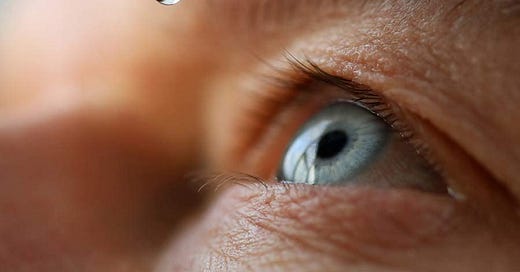Everyone has a favourite drug. I don’t mean recreational drug by the way.
I once asked this question at a recent handover meeting and people mentioned a variety of medications. It seems tazocin (piperallicin + tazobactam) is a fan favourite as it tends to wipe out any bacteria it comes across. Others like diclofenac as it is the only drug we have against renal stones.
For me personally, there’s only one winner. Chloramphenicol.
It’s one of the few antibiotic eye drops/ointments in our armoury and as the saying goes “if in doubt, give some chloramphenicol.” It’s a great drug as it works on people of all age groups, produces little to no side effects and also acts as a lubricant alongside having antibacterial properties.
I promise I’m not a drug rep by the way (in case you’re wondering).
I recently sat in a presentation about ophthalmic presentations in acute care and there were some interesting discussions. I came across this paper which evaluated antibiotic resistance in ocular bacterial infections. It took 53 journals with data on antibiotic susceptibility profiles of ocular organisms and evaluated resistance. It found that in the vast majority of studies, resistance to chloramphenicol remained less than 50%. That’s actually not a bad statistic actually where other studies on urinary tract organisms showed showed up to 74% resistance to drugs like trimethoprim!
However, as the studies were between 2000 to 2022, the study concluded that resistance to chloramphenicol has been rising especially because of its over prescribed nature and ease of availability from primary care, secondary care opticians and even over the counter in pharmacies.
I mean, conjunctivitis is not an easy condition to treat especially because patients are adamant they need drops. However, we do need to be more precise in our diagnosis to help decipher whether a presentation is truly “bacterial” or not. I mean, almost 80% of cases of conjunctivitis over the past few months are probably down to allergies.
I thought I’d take the opportunity to summarise some points I took away from the teaching session as to how to differentiate the various types of conjunctivitis.
Bacterial:
Usually unilateral
Very sticky eye,
Always injected (red)
Viral
Unilateral or bilateral,
Serous discharge
Periauricular lymph node - this is key! In 80% of cases there is a lymph node on the ipsilateral periauricular area.
Clear or “pink” sclera
Allergic
Bilateral
Usually clear sclera
Serous discharge
Itching ++
Remember - signs of conjunctivitis in a newborn always requires a referral as it could be caused by chlamydia.
So next time you encounter a patient with ?conjunctivitis - enquire about their symptoms and examine them thoroughly and if you feel its not bacteria then say it with confidence!
After all, you will be contributing to our collective efforts to battle bacterial resistance.
Until next time
Check out awesome courses!
If you’re a physician associate due to sit your national exams, be sure to check out awesome value Premium package. We bring together our acclaimed OSCE masterclass and written masterclass in a single offering and offer you a FREE mock exam. We promise to prepare you comprehensively to help you pass your upcoming national.
Don’t forget to use our newsletter exclusive code NEWSLETTER5 for a further 5% off.
Check us out on our various pages
Website: www.paretoeducation.co.uk
Instagram: www.instagram.com/pareto_ed
Twitter: www.twitter.com/pareto_ed
Youtube: https://bit.ly/3DPm23c
Email: paretopaeducation@gmail.com






